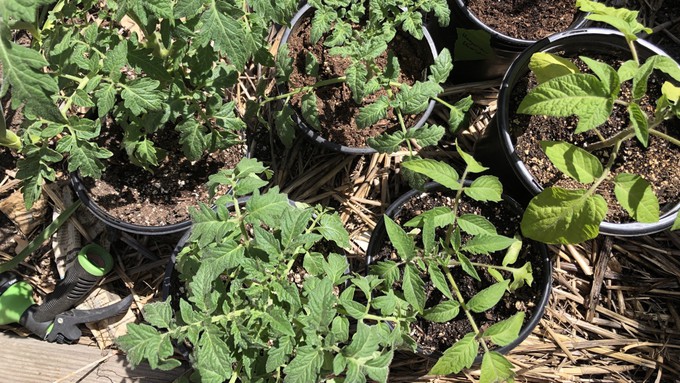
Spring warm-up means one thing: Time to plant tomatoes

OK, who's ready to plant? It's finally warm enough to put those tomatoes you've been nurturing in their summer locations, whether in ground, a raised bed or spacious containers. Kathy Morrison
Happy Earth Day! Mother Nature’s gift to us? Some much needed warmth and abundant sunshine.
In other words, it’s finally tomato planting time!
According to the National Weather Service, Sacramento can expect several days in the 80s.
“Warm weather will continue for at least the next week across interior #NorCal with high temperatures forecast to remain above average,” tweeted the NWS Sacramento office on Saturday morning.
After mostly below-average temperatures, April is finally warming up – a lot. Normal high for this week: 72 degrees. Instead, we’ll see highs in the mid 80s, peaking at 87 on Thursday.
Just as important for young transplants, overnight lows are warming, too. Temperatures shouldn’t get below 50 all week. That will help heat soil – necessary for root development.
So, break out the trowel and get planting!
* Start setting out tomato, pepper and eggplant transplants.
* With all this warmth, soil can dry out quickly. Make sure to keep transplants watered and newly planted seedbeds moist.
* From seed, plant beans, beets, cantaloupes, carrots, corn, cucumbers, melons, pumpkins, radishes and squash.
* Plant onion sets.
* In the flower garden, plant seeds for asters, cosmos, celosia, marigolds, salvia, sunflowers and zinnias.
* Transplant petunias, zinnias, geraniums and other summer bloomers.
* Plant perennials and dahlia tubers for summer bloom.
* Late April is about the last chance to plant summer bulbs, such as gladiolus and tuberous begonias.
* Transplant lettuce and cabbage seedlings.
* April is the last chance to plant citrus trees such as dwarf orange, lemon and kumquat.
* Smell orange blossoms? Feed citrus trees with a low dose of balanced fertilizer (such as 10-10-10) during bloom to help set fruit. Keep an eye out for ants.
* Apply slow-release fertilizer to lawn.
* Foliage on azaleas and camellias looking a little yellow? Give them a boost with chelated iron.
* Trim dead flowers but not leaves from spring-flowering bulbs such as daffodils and tulips.
* Remember to weed before those unwanted plants start to flower.
Comments
0 comments have been posted.Sacramento Digs Gardening to your inbox.
Sites We Like
Garden Checklist for week of July 21
Your garden needs you!
* Keep your vegetable garden watered, mulched and weeded. Water before 8 a.m. to reduce the chance of fungal infection and to conserve moisture.
* Feed vegetable plants bone meal, rock phosphate or other fertilizers high in phosphate to stimulate more blooms and fruiting. (But wait until daily high temperatures drop out of the 100s.)
* Don’t let tomatoes wilt or dry out completely. Give tomatoes a deep watering two to three times a week.
* Harvest vegetables promptly to encourage plants to produce more. Squash especially tends to grow rapidly in hot weather. Keep an eye on zucchini.
* Pinch back chrysanthemums for bushy plants and more flowers in September.
* Remove spent flowers from roses, daylilies and other bloomers as they finish flowering.
* Pinch off blooms from basil so the plant will grow more leaves.
* Cut back lavender after flowering to promote a second bloom.
* It's not too late to add a splash of color. Plant petunias, snapdragons, zinnias and marigolds.
* From seed, plant corn, pumpkins, radishes, winter squash and sunflowers.